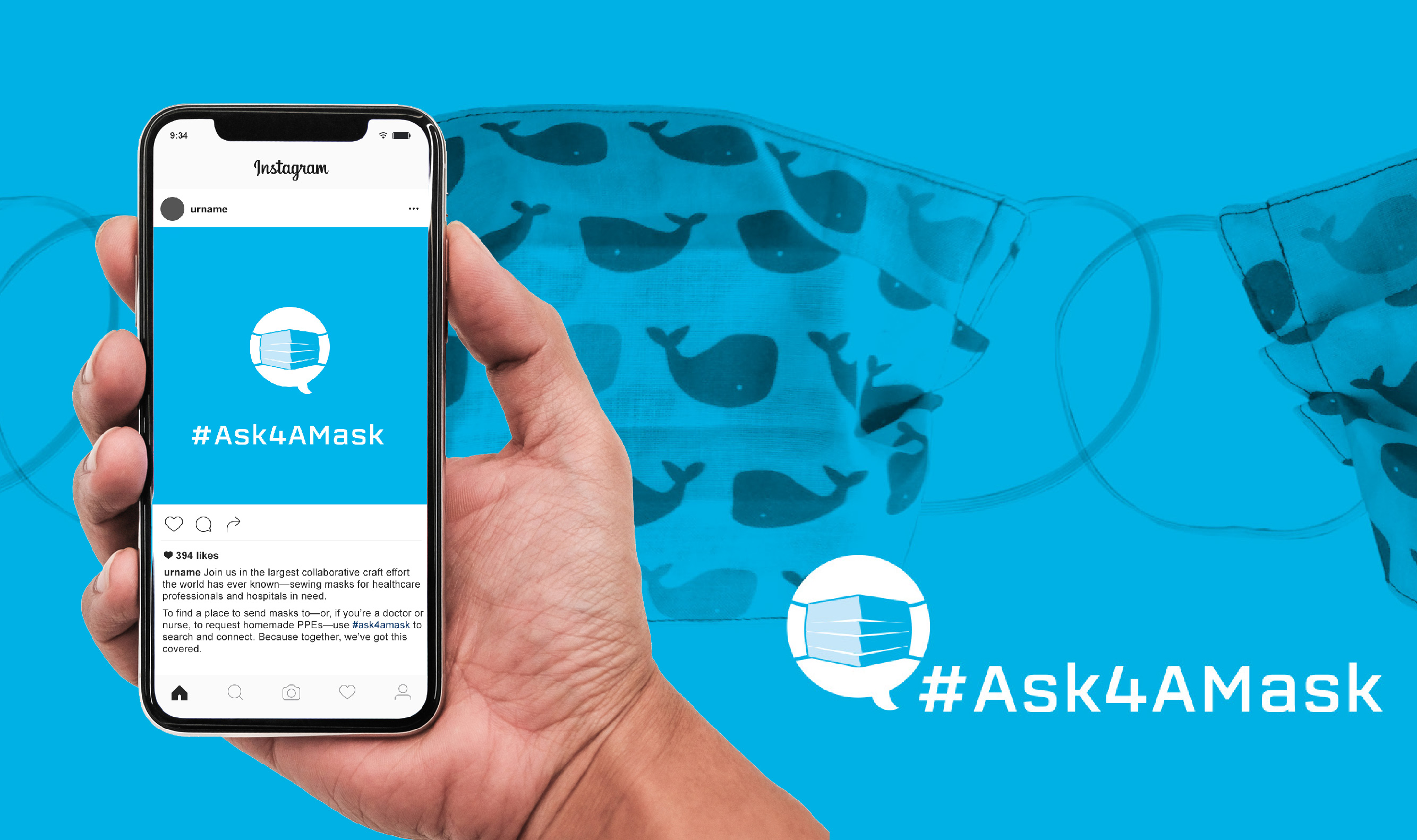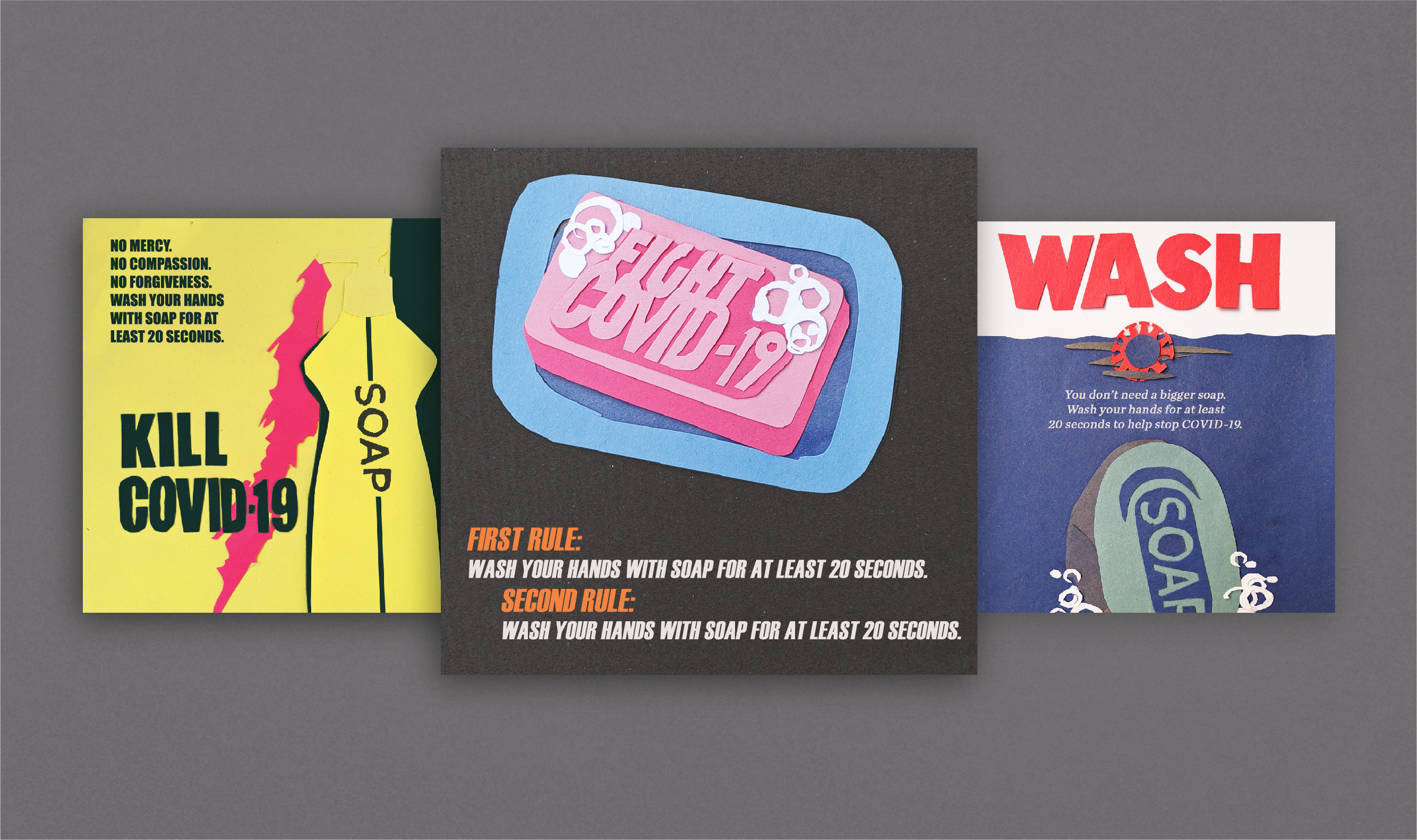
To say that things are weird right now would be a profound understatement. Working remotely, avoiding social contact, having our lives fundamentally transformed as we watch an invisible virus creep closer and closer to us—it’s enough to make anyone feel powerless.
That’s certainly how we were feeling as an agency when this all started. But then the UN issued a Global Call to Creatives, and everything changed. Even though we couldn’t make ventilators, mix hand sanitizer, or sew masks, we had the opportunity to do something. To put the skills that we’ve spent years honing to work, and use creativity to help people across the world stay safe—and protect themselves against the disease. And while we’re under no illusion that our efforts have the impact of doctors and nurses, or even the essential workers keeping grocery stores and pharmacies up and running, we wanted to do what we could.
So we did. And like everyone else participating in the project, we did it for free. Because even though (obviously) billable work is the cornerstone of a functioning agency, we felt we had a larger responsibility—to the world and to our communities.
What We Made:
#Ask4AMask

Drawing on his mother’s own frustrations in sewing PPEs for the medical community, ACD Carl Nielson created a movement around a simple hashtag—#ask4amask. Devised to connect crafters, tailors, and seamstresses with medical professionals, the effort employed hashtagging to transform social media into a searchable database of mask makers and those in need.
Don’t Make Myths. Make a Difference.

Some myths are easy to spot. After all, no one (well, almost no one) is dedicating their life to chasing Bigfoot, hunting mermaids, or trying to photograph a vampire. So when tasked with helping bust COVID-19 myths for the UN, Senior Copywriter Austin Duck and Senior Art Director Melissa Rudder made it a little easier to differentiate between fact and fiction.
Mysteries of Home

You could look at social distancing and stay-at-home orders as a buzzkill. But Senior Copywriter Gregg Hutson and Senior Digital Art Director Joe Symoski don’t. They see it as an opportunity to explore the aspects of our spaces that we never really take the time to consider.
Notes
Inspired by the Italian opera singer who serenaded his neighborhood during quarantine, Social Art Director Rachael Marie Herbes and Senior Copywriter Chris Minesinger collaborated on an animated video about the unspoken sense of community that comes from social distancing.
Soap Power

Inspired by being quarantined at home with his young son (and finding ways to keep him entertained), Senior Copywriter Gregg Hutson decided that the best way to remind people to wash their hands was by making it fun for everyone involved. Using a construction paper/school craft approach to reimagine iconic movie posters, Soap Power offers a playful take on a serious, life-saving message.
W.H.O. tf knows
On reviewing the COVID-19 myths that the UN wanted busted and realizing that they directly aligned with things cats hate, Senior Copywriter Austin Duck, Senior Art Director Melissa Rudder, Producer Brenna Mathers, Motion Designer Sean Cullen, and Designer Mallory O’Conor hit the ground running to create a video only the internet could love.

Creativity in the time of crisis is an interesting thing, especially in an agency setting. Too often, our work is thought of as simply “solving a brief” in a highly relevant way, earning brands attention, and doing things to make them famous.
But that definition misses something, overlooking what happens in the mind of the creatives working on the project. People like to toss around cliches like “inspiration can come from anywhere” and “some people are just born creative,” but the truth, we think, is closer to something the Modernist poet Wallace Stevens used to say—that creativity is the imagination pushing back against reality, ensuring that the individual mind can still exist, find joy, live.
And when you consider the stakes of something like the coronavirus, creativity really is fundamental. The reason creativity is a better method of spreading information about the virus than, say, the news, is because creativity is more than the meaning of its message. It’s more than “wash your hands for 20 seconds.” It’s more than “don’t inject Lysol into your body.” It delivers the message in a way that allows audiences to find hope amid the anxiety. To laugh in the face of danger. To share a moment of relief with others.
Because that’s what creativity does. It affirms that we’re here together. That we’re more than a set of eyes alone in an apartment, or a disembodied message floating around the internet. Creativity allows us to find that hopeful place in our imaginations—the one where this all makes sense, where we’re all experiencing this together, where we can get through this—and make that place real.
And once it exists, others can inhabit it. Once it exists, we have a (temporary) shelter from the storm. And while it’s probably not even worthy of a footnote in this whole, strange saga, it’s how we do our part when there’s nothing else to be done.
See how other creatives across the world have approached the UN’s Global Call to Creatives.





